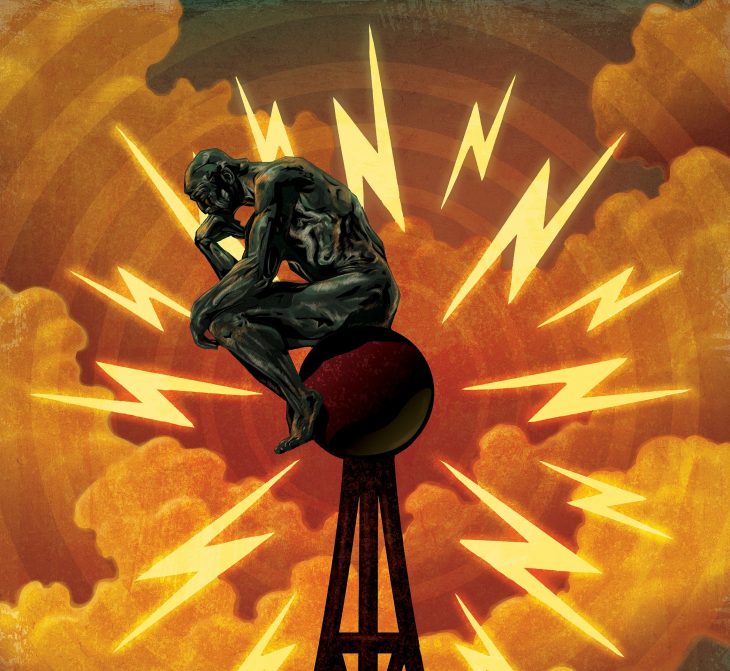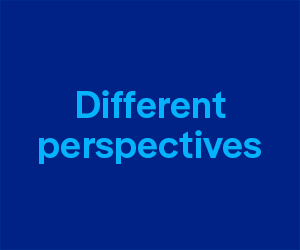
“Innovation is the child of freedom and the parent of prosperity.” – Matt Ridley, in How Innovation Works
By Tim Denton
DESPITE MANY POINTS OF AGREEMENT I have with the analysis made by Brad Danks in his piece The Critics are wrong: it’s time to regulate the Internet, I am in utter disagreement with his conclusions, namely that the Internet in Canada both can and should be regulated under the Broadcasting Act.
Mr. Danks is not my target, though. The Broadcasting and Telecommunications Legal Review (BTLR) is. My conclusion is the report should be put on the shelf, forgotten as an embarrassing outburst of illiberal thought, and of no more significance or moral persuasiveness than monopolists calling for the expansion of their monopolies. Consigned to obloquy, it should serve as the prime example of the over-reach of special interests.
When agricultural marketing boards in Canada expand their privileges, we all know it will mean higher egg, milk and cheese prices. When the cultural and communications industries wrap themselves in the flag of Canadian content, and persuade governments of their case, we know that prices for bandwidth and content will rise, and choices of content will shrink.
The power of the telecommunications and cultural rent-seekers to bend governments to their will is a fact of Canadian life, but because I believe in freedom – to communicate, to innovate, to be left alone – I fight things like the BTLR report with every ounce of breath in my body. The Holy Office of the Inquisition would be well pleased with the spirit of the BTLR. I hope to persuade you of the truth of that proposition before you have finished reading.
What we agree on
My agreements with Mr. Danks might be the best place to start. The situation of Canadian broadcasting and newspapers ranges from profitable in some places – to serious – to dire, especially in the case of newspapers. In considerable measure the Internet has reorganized the world that broadcasters and newspapers used to live in. A few large American players (we will call them platforms) have captured the advertising revenues that used to be theirs. Consequently, newspapers are starved of the revenues needed to sustain the work they carry on.
What to do about the power of these platforms is the principal issue in communications at this time. I do not pretend to have a complete answer. It may lie in the powers of the U.S. government over competition policy. I especially recommend Tim Wu’s short book, cited with approval by Mr. Danks, on the need to rethink the issue if size in relation to consumer harm: The Curse of Bigness: Anti-Trust in the New Golden Age.
The lack of certainty about what can be done about platforms such Facebook, Twitter and Google is matched by a clear understanding that extending Canada’s Broadcasting Act to cover these entities, and every other Internet activity, is wrong. Yet this is what the BTLR and Mr. Danks propose. He writes:
“The current reality is the Internet is no longer “free” but is instead heavily monopolized by a small number of enormous technology companies. It is fair to say that the Internet was designed to be “free and open” and perhaps it was for a decade or more. However, that time is over and regulation is now necessary. Furthermore, I believe that it must be regulated in order to create the opportunities for innovation.”
We agree on the dangers of monopolies and market power in the control of public discourse, and on the desirability of controlling the powers of those who would control us.
The issue, however, is the proper definition of the problem to be solved. For Mr. Danks and the broadcasting community more generally, the problem presents itself as the American platforms vacuuming money out of a system that should be Canadian controlled, in principle. The issues of innovation and free discussion are merely a side show, if they register at all. For me the issue of freedom to use networks is not an afterthought but the core political problem of a free society.
“The Commission has claimed jurisdiction over the Internet in Canada, as long as the content is sound or video, but so far has had the wit not to try to regulate it.”
The enemies of free discussion are not restricted to the private sector, nor are they confined to large platforms. The suppression of free speech and thought can come in the form of the state, the social justice warrior, the Twitter mob, the organs of official truth, or even in excessive prices for the use of networks. There is not one problem to be solved: the diversion of revenue from Canadian broadcasters and newspapers. Nor is there one exclusive remedy: Regulating everything under the Broadcasting Act.
Our second point of considerable agreement with Mr. Danks lies in his claims about competition on the Internet, which lead him to believe the Internet is not free. By “free” he is referring to freedom of speech, and freedom to innovate, rather than free as in free beer. Citing the work of Matthew Hindman, in his book, The Internet Trap, Danks says:
“…on the Internet, small advantages compound over time, creating significant and lasting competitive advantages. Sites with higher traffic can innovate faster, improve load times, lower search costs, create overall stickiness and are then locked in by network effects. He concludes “once a winner emerges the market becomes highly inflexible.”
We have no quarrel with Hindman’s assertions. They may well be perfectly true, and if so they are matters of concern. We agree with Mr. Danks the Internet is showing signs of monopolies and market powers, and some of the platforms are exercising controls over speech.
We differ from Mr. Danks’ conclusion that extending the Broadcasting Act to all of it that appears in Canada is a practical, effective, and desirable outcome.
I liken his proposed solution to the old story of how to roast a pig, by burning down one’s house around it. Danks similarly seeks to control the market power of the large platforms by asserting the state power of the CRTC over a massively increased range of formerly free communication.
The Internet is free as in speech but not free as in beer. You do not need the permission of the state to speak on the phone, to write a letter, to publish a book, to upload a video to YouTube, or to communicate a software program across a network. Freedom of speech was hard won through revolutions and wars. It is incorporated in the American constitution and is given expression in Article 2(b) of the Canadian Charter of Rights and Freedoms. The clear meaning of this is free expression does not require the permission of the State, nor its licence.
It’s strange the twentieth century reverted to a system of state control after centuries of relatively less-controlled printing. Broadcasting has seen a different evolution – it has been marked by prior licensing since its earliest days. This reversion was induced by the characteristics of broadcasting. Signals wandered spatially over international boundaries, as well as wandering over frequencies. Avoiding signal interference is the essential idea behind radio regulation. Early in the twentieth century the basic pattern was laid down. The available spectrum was divvied up into bandwidth for particular uses and classes of user.
Broadcasters were assumed to be a few voices talking to many. A broadcasting licence was made into a legal privilege, and it was held in the same way as a feudal right. An obligation to serve more than merely commercial objectives was at the core of the bargain. Hence the basic attributes of spectrum assignment have been state control and legal privileges held on conditions.
The system was national, in that the largest possible jurisdiction was appropriate for managing the system. It was controlled directly or indirectly by agencies of the state. It was built around the then characteristics of radio waves. It assumed, correctly in the circumstances, that speakers would be few, and listeners, many. Dozens, at best, would talk to millions. And the direction of talk was one-way.
At present, “programming” meaning sound or full motion video, has come to be the defining characteristic of broadcasting. As a consequence, the CRTC believes if it decided to do so, it could make cat videos uploaded to YouTube into a regulated and licensed activity. So would video blogs and podcasts be licensed activities. The use of the Internet anywhere in Canada could be regulated under the Broadcasting Act by a simple decision of the CRTC chairman and two other commissioners acting on a panel – the other commissioners could not prevail against the hearing panel.
Hence the Commission has claimed jurisdiction over the Internet in Canada, as long as the content is sound or video, but so far has had the wit not to try to regulate it.
try to regulate it.
This is the system that the Broadcasting and Telecommunications Legislative Review Panel (the BTLRP) and Mr. Danks want to spread to every corner of the Internet in Canada.
The proposals of the BTLRP in this respect call for an unprecedented expansion of state power over what you can say or do over the Internet. We do not think the BTLR or Mr. Danks have given sufficient thought to what is entailed by seeking to regulate all communication involving sound or full motion video. Or maybe they have and rejoice in the prospect.
Tim Denton is a lawyer and former CRTC commissioner and chairman of the Internet Society Canada Chapter. Part II will appear Thursday.
Original artwork by Paul Lachine, Chatham, Ont.




